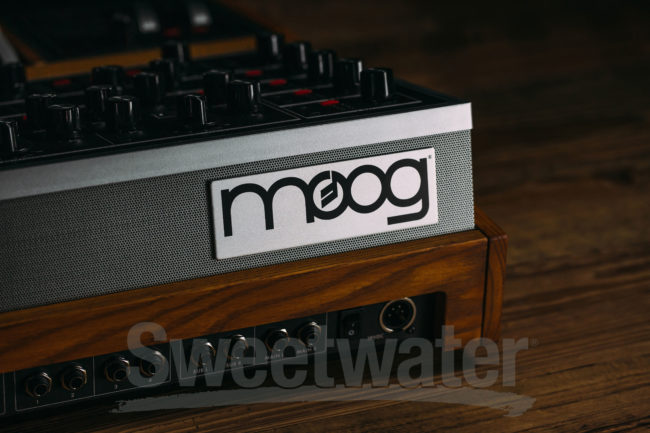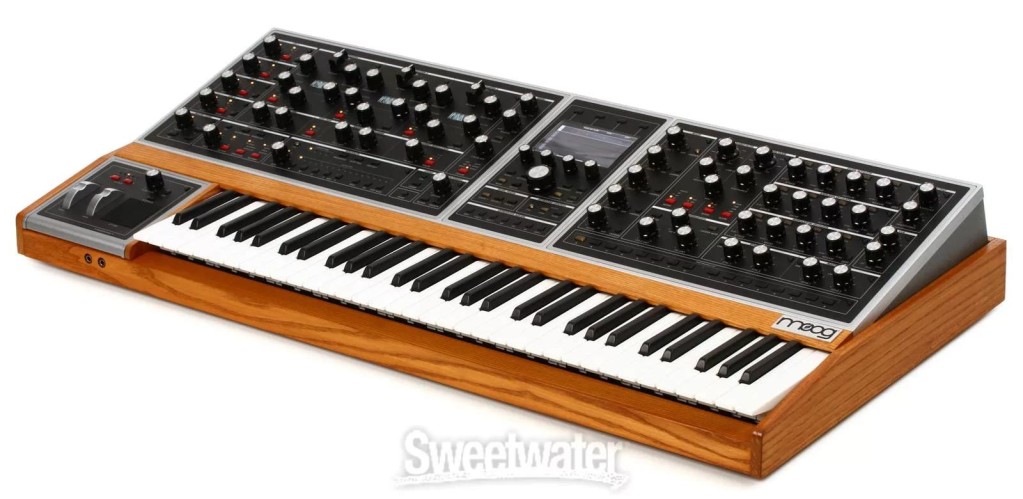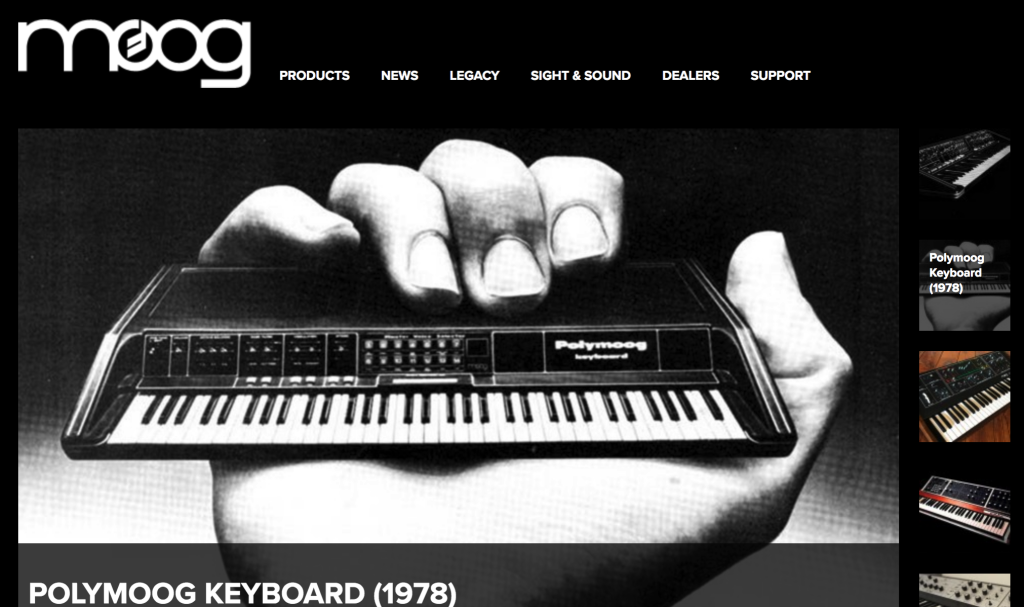It’s called the Moog One but think 8- or 16-voice synth. And this is the “dream” analog synth in that it’s a luxury instrument, running up to US$7999 for the 16-voice model.
It will also make history, given there hasn’t been a polysynth with the Moog name on it since the early 1980s.
US-based retailer Sweetwater appears to get the scoop on this one. The big deal here: advanced envelopes, a deep, no-compromise architecture with two filters per voice and four LFOs, and features like routable ring modulation, oscillator Frequency Modulation, and hard sync. It’s also loaded up with I/O, both audio (including inserts for effects) and control voltage/gate. There’s even a LAN port that promises future expansion.
The Moog One is also a kind of high-end successor to the Minimoog Voyager, with an emphasis on live performance features (including a feature called User Spaces for storing and recalling settings), the return of the X/Y pad, and an insane amount of hands-on control – 73 knobs and 144 buttons.
And while we’re waiting on photos, the side panels are made from ash and the front panel from aluminum, plus it does look nice in this one cropped shot.
Sweetwater have a blog post on this:

https://www.sweetwater.com/insync/first-look-moog-one/

And here are those specs. So we expect the usual attention to detail and find craft from Moog, if at a premium price above even the majority of boutique makers in this sector – US$5999 for 8-voice, 7999 for 16-voice.
It’s available now in the USA from Sweetwater (they even say “in stock” as I write this, even though there hasn’t been a formal public announcement yet).
8- or 16-voice polyphony
3 VCOs per voice with waveshape mixing and OLED displays
Unison mode (up to 48 oscillators on the 16-voice instrument)
2 filters per voice with filter mixing (2 multimode State Variable filters that function as a single filter, and a classic lowpass/highpass Moog Ladder filter)
3 DAHDSR envelopes per voice with user-definable curves
3-part multitimbrality
Separate sequencer and arpeggiator per timbre
Chord memory
Dual-source noise generator with dedicated envelope
Mixer with external audio input
Ring modulation with selectable routing
Oscillator FM and hard sync with selectable routing
4 assignable LFOs
Premium 61-note Fatar TP-8S keybed with velocity and aftertouch
Assignable pressure-sensitive X/Y pad
Digital Effects (Synth and Master Bus)
Eventide reverbs
Selectable glide types
USB and DIN MIDI
Save, categorize, and recall tens of thousands of presets
Create Performance Sets that make up to 64 presets accessible at the push of a button
2 x ¼” stereo headphone outputs
2 pairs of assignable ¼” outputs (supports TRS and TS)
4 x ¼” hardware inserts (TRS)
1 x ¼” external audio input (line-level)
1 XLR + ¼” TRS combo external audio input with trim knob
9 assignable CV/GATE I/O (5-in/4-out)
USB drive support for system and preset backup
LAN port for future expansion
Now we just need a big poster to hang over our beds, maybe – well, and to hear what it sounds like. Stay tuned.
But yeah, for the rest of us, you have other options from the likes of Dave Smith, Waldorf, and of course monosynths from Moog. So this will mainly be about curiosity as to what a polysynth can do when it’s positioned as a fully premium electronic instrument.
More:
https://www.sweetwater.com/store/detail/MoogOne8–moog-one-8-voice-analog-synthesizer
https://www.sweetwater.com/store/detail/MoogOne16–moog-one-16-voice-analog-synthesizer
Moog are obviously leading up to their announcement; for now what you get on the Moog site (though this is a bit fun for synth history nerds) is a lead-up of Moog’s past polysynths – late 1970s to early 1980s, and yes, it really has been that long.

You can catch up with the news of that era here:
https://www.moogmusic.com/news
… and I assume a bit of 2018 news on its way soon.